In the nineteen seventies, Waikiki Beach was the tropical paradise that tourists from all over the world flocked to. From the sweet smells of the native orchids, to the crystal-clear ocean water, Waikiki lulled its visitors into a groovy sense of Aloha.
Royal Hawaiian Resort
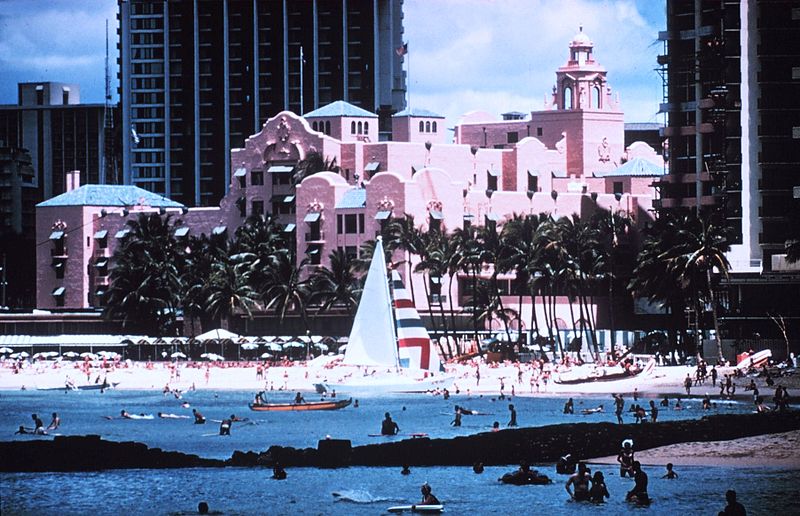
The Royal Hawaiian Resort in Waikiki, also known as the Pink Palace of the Pacific is an iconic and luxurious hotel. The resort is just steps away from the original Mai Tai Bar, private beach and Waikiki’s only oceanfront luau.
Ala Wai Boat Harbor
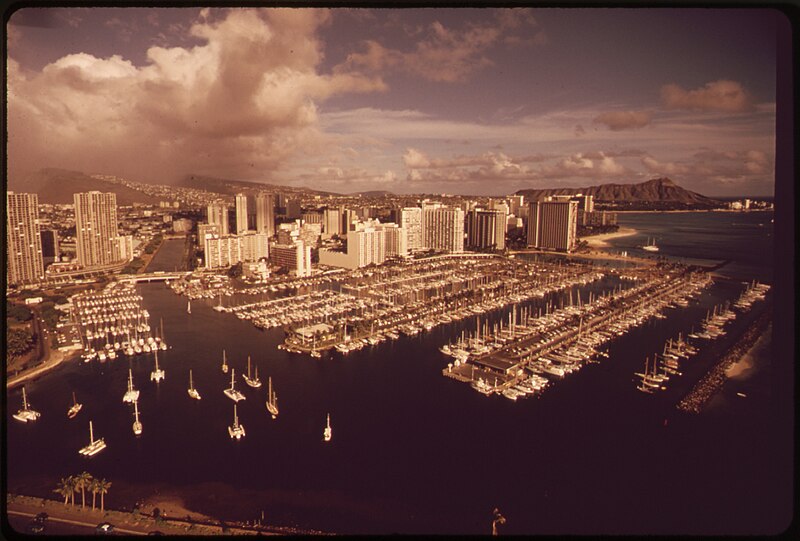
An aerial shot of Ala Wai Boat Harbour presents the catamaran and trimaran sailboats that were, and still are, in fashion in 1973. Diamond Head and Waikiki Beach can also be seen in the background.
Aston Waikiki Circle
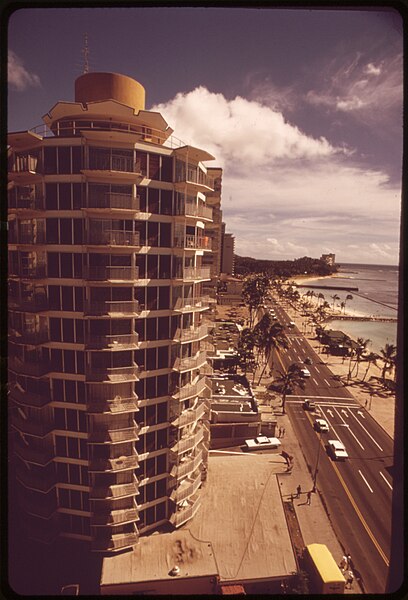
Perched along Kalakaua Avenue, the Aston Waikiki Circle Hotel enchants its guests with views of Waikiki Beach which is just steps away from the hotel. The hotel was built in 1968 which makes the resort only five years old when this view was photographed.
Honolulu Skyline
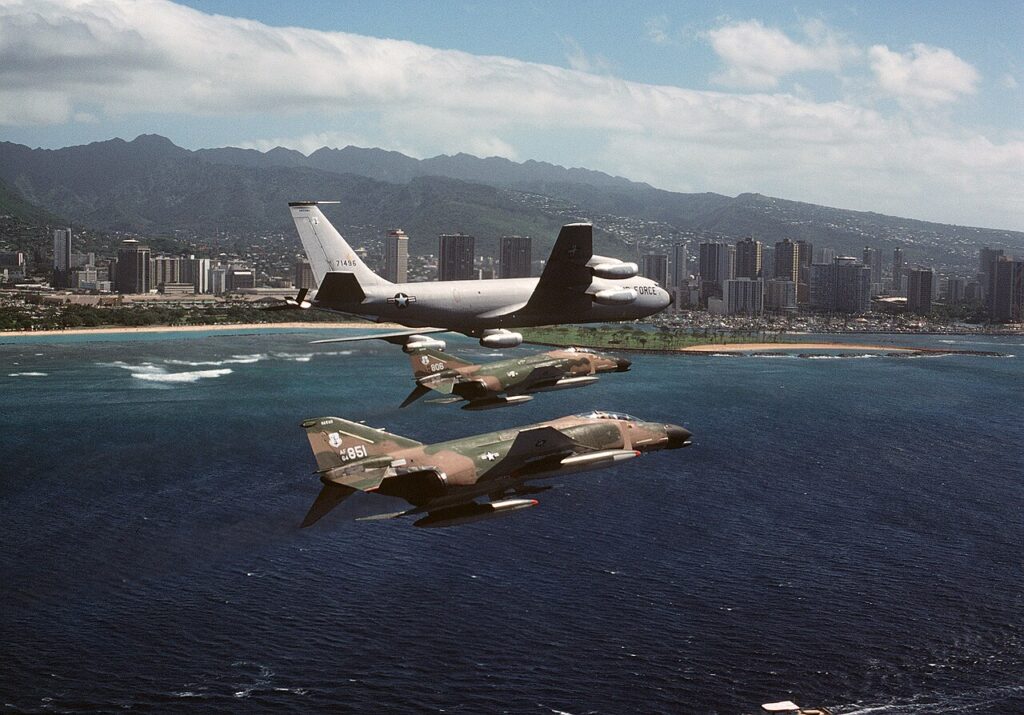
Complementing the backdrop of the gorgeous skyline that is Honolulu and Waikiki Beach, two F-4 Phantoms of the Hawaii Air National Guard are seen flying in formation with a Boeing KC-135A fuel tanker.
70’s Waikiki
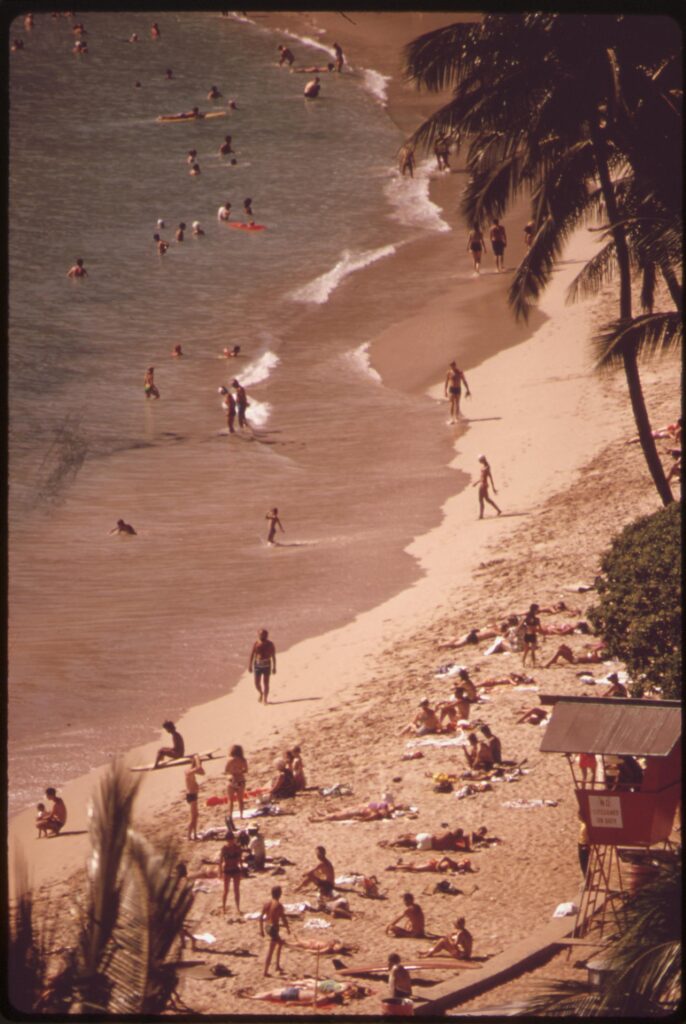
In the seventies Waikiki Beach was the first stop for most visitors to the island. This sandy stretch in Honolulu was what most envisioned for Hawaiian tourism. Lined by sky-high resorts and swaying palm trees, Waikiki Beach was a classic Hawaiian destination.
Generally known for its gentle surf, Waikiki Beach has been a prime destination for ocean fun. In this photograph from 1973, the rustic lifeguard tower framed by those swaying palms in the photo gives a sense of a memorable vacation destination from back-in-the-day.
Waikiki Beach is known today for its vast amounts of tourists. Back in 1973, as this photo clearly presents, things have not changed very much. By the way, Waikiki means “spouting water,” which refers to the many rivers and springs that flowed (much like tourists) into the area.
Black Sand Beach at Kaimu
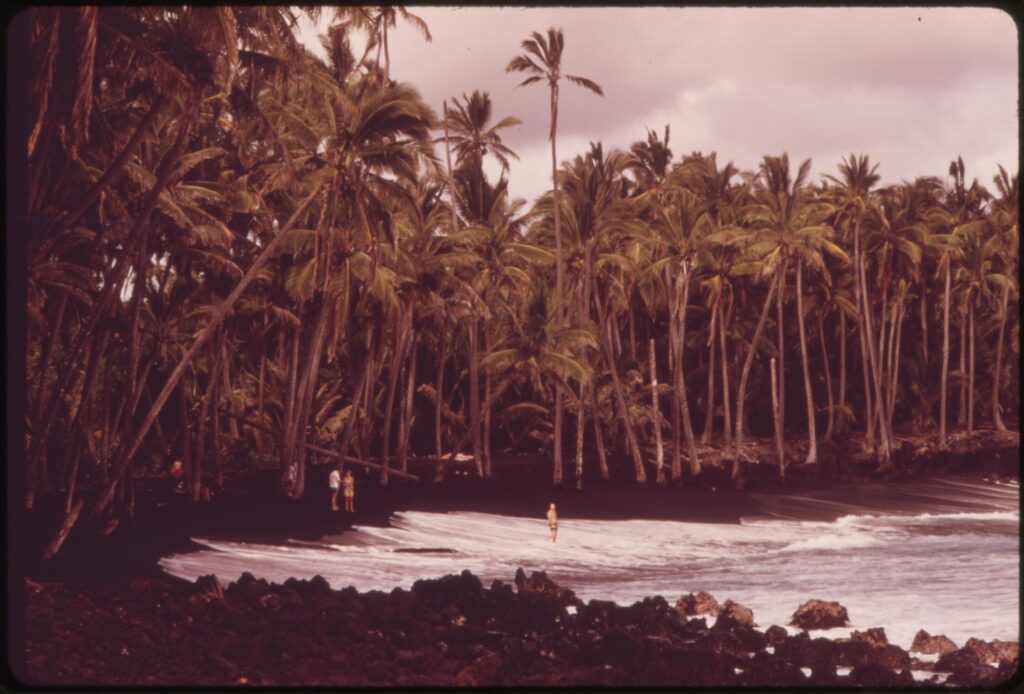
Created by lava runoff, The famous Black Sand Beach at Kaimu was formed by lava runoff and is one of the area’s favorite tourist stops. The gentle surf along the black sands is perfect for taking a dip in and to do some waist-high wading.
Outrigger Canoes
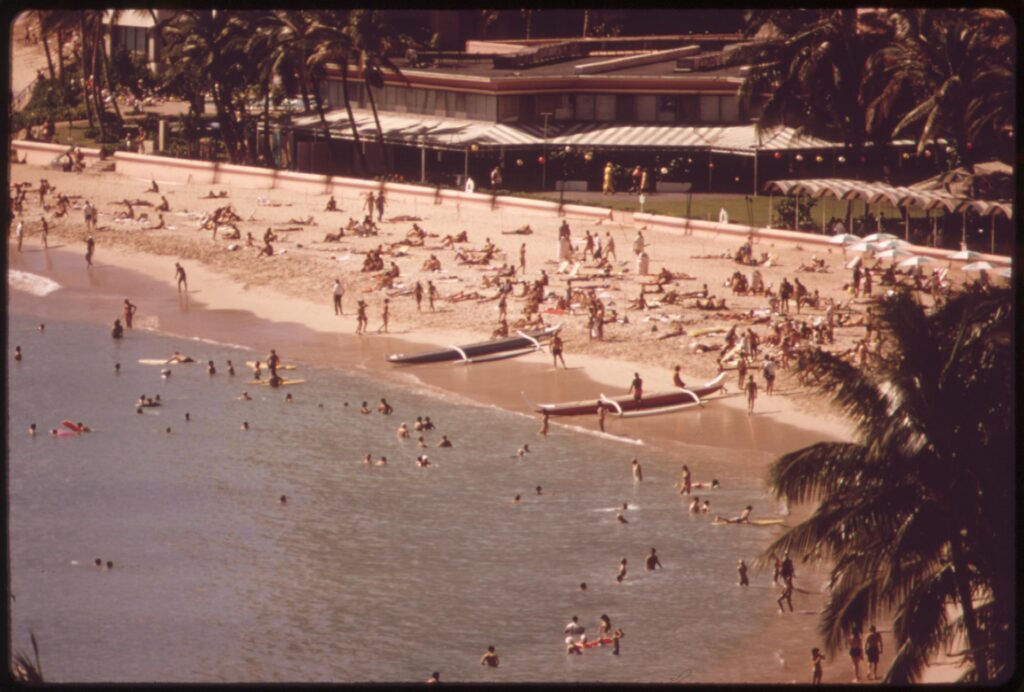
Outrigger canoes and surfers were all set to go out for a surf safari at Waikiki Beach back in October 1973. Polynesians brought surfing to Hawaii, the sport really took off and surfing in Hawaii wasn’t only a sport but also very ritualistic. Outrigger boats, on the other hand, were originally developed across the ocean by peoples of the islands of Southeast Asia for sea travel.
Waikiki Beach is still famous for its outrigger canoes. But these canoeing tourists look as if they might get broadsided by some of the local hang-ten surfers. One can almost hear the surfer on the right shouting out “coming through!”
Prime Real Estate
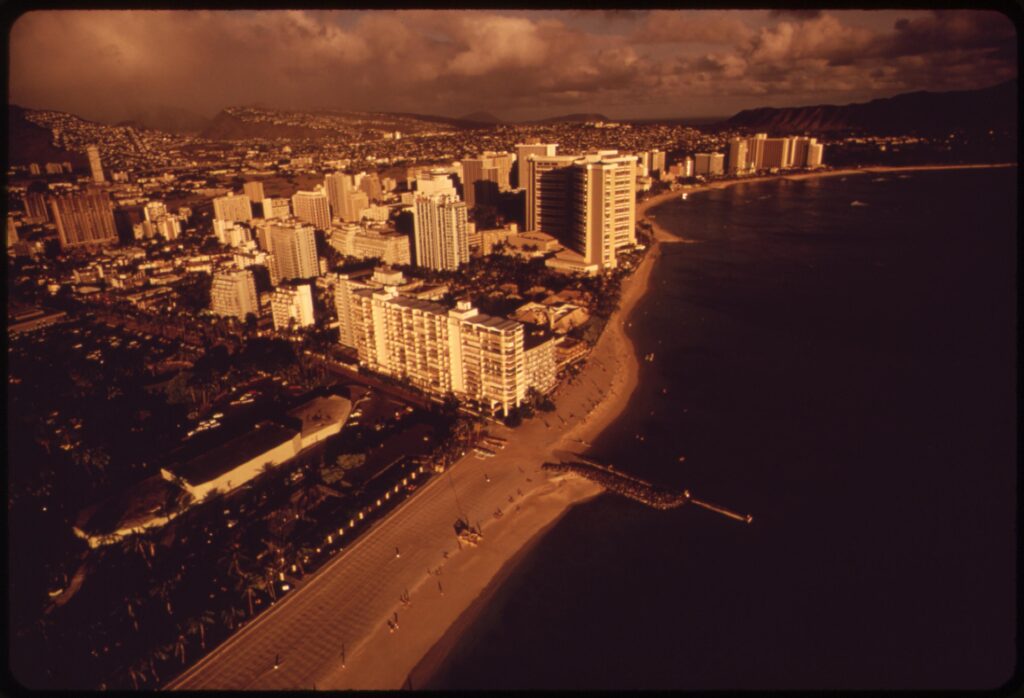
In 1963 there were over 9,200 hotel rooms on all of Oahu. A decade later the number blossomed to over 26,000 rooms and most were in Waikiki. Beginning the hotel boom in 1901, The Moana Hotel opened its doors and is known as The First Lady of Waikiki.
Lunalilo Highway
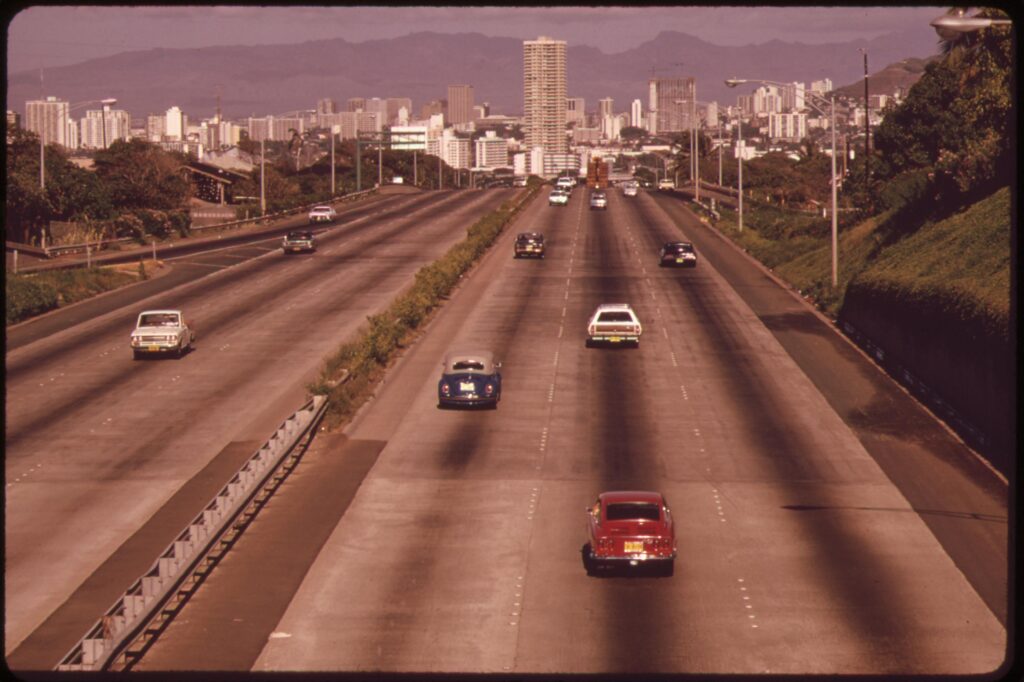
This is H-1 (or Lunalilo) freeway in 1973 looking west toward downtown Honolulu. Construction on H-1 was finished in 1959 and it is the longest and busiest Interstate Highway in the state of Hawaii running from the east to the west.
Here is another view looking east on H-1 Freeway in downtown Honolulu photographed in October 1973; this vista includes one of Hawaii’s most iconic phenomena, a rainbow. Which reminds us of one of Kimo’s Rules which is simply, no rain – no rainbows. Mahalo.
Koko Head Park
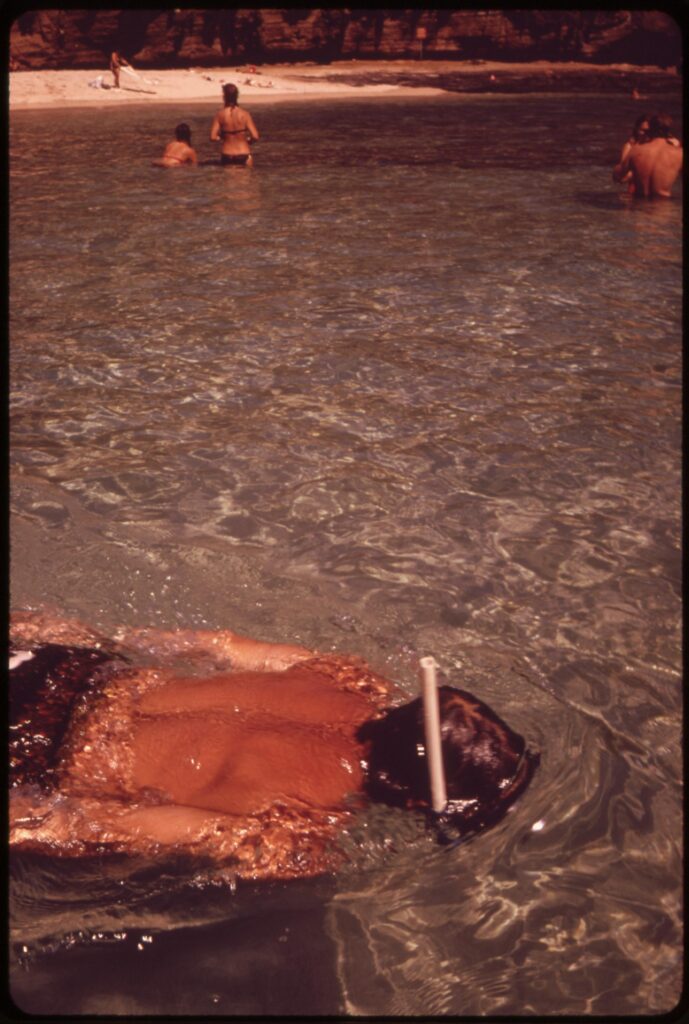
There is no fishing allowed at Koko Head Park in the Hanauma Bay as all marine life is protected here. The bay is a popular snorkeling and skin diving spot as seen here in 1973. Look how vibrantly clear the ocean water is that surely affords splendid sea life spotting.
Honolulu International Airport
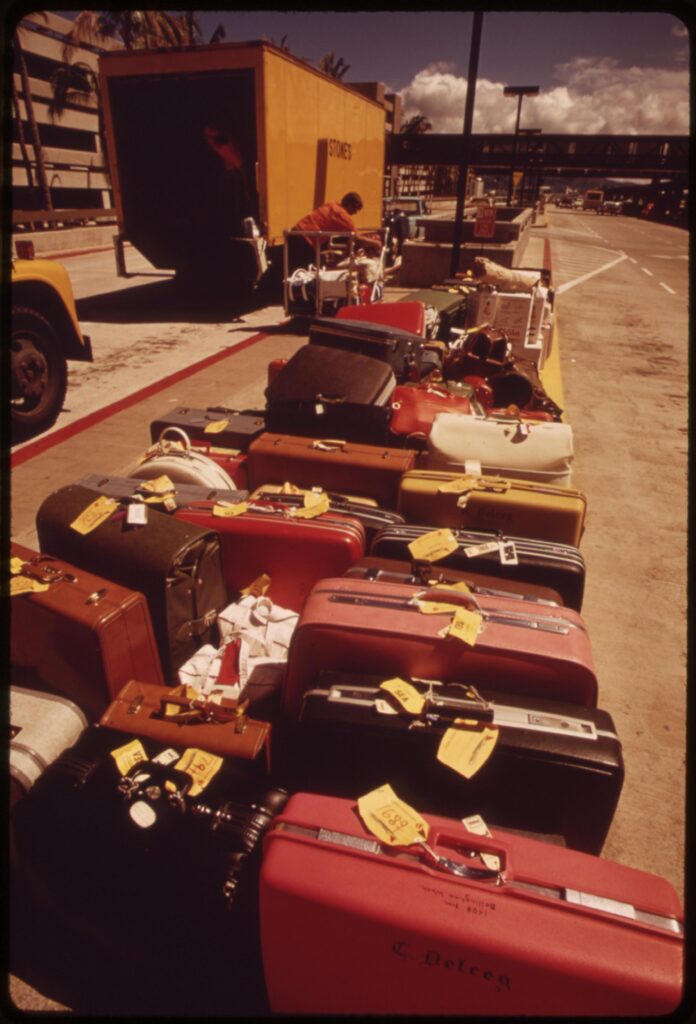
Pictured is Honolulu International Airport and the luggage corral. The airport was the hub for almost all of the island’s visitors at this time. About 2.7 million guests were anticipated in 1973. Can anyone spot a Samsonite in this photo?
Paradise Park
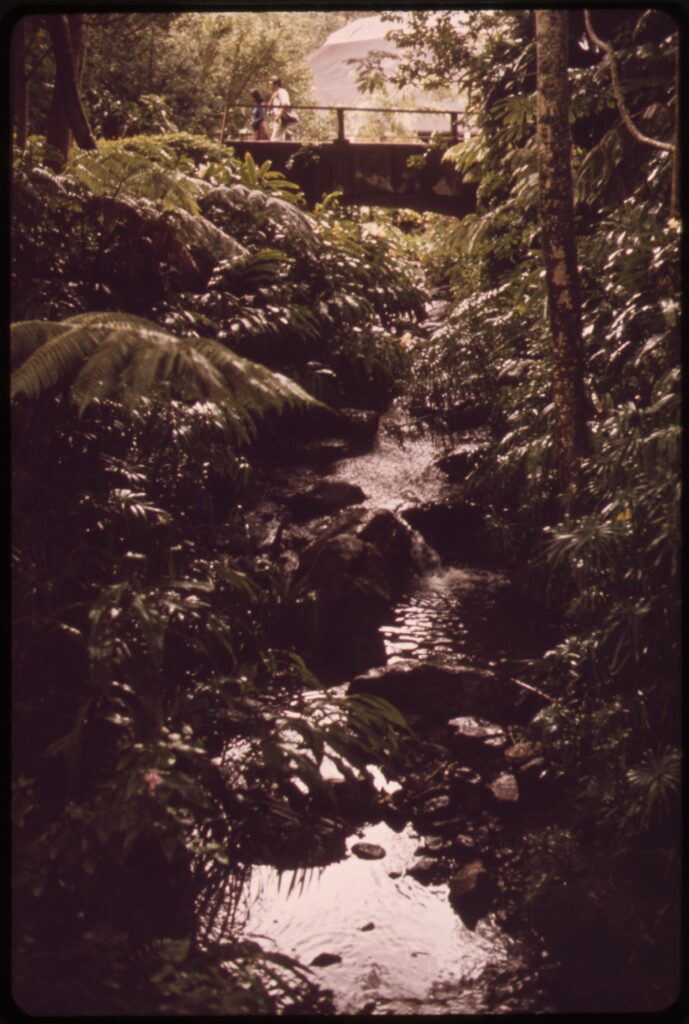
Paradise Park was a former nature theme park in Manoa, just north of Honolulu. Paradise Park featured a large maze near the visitor’s center where one can still have a bite at the restaurant, despite the park being mostly closed since 1994.
For additional “vintage” articles, reference the following links:
Vintage Disneyland Photos from the 50s


